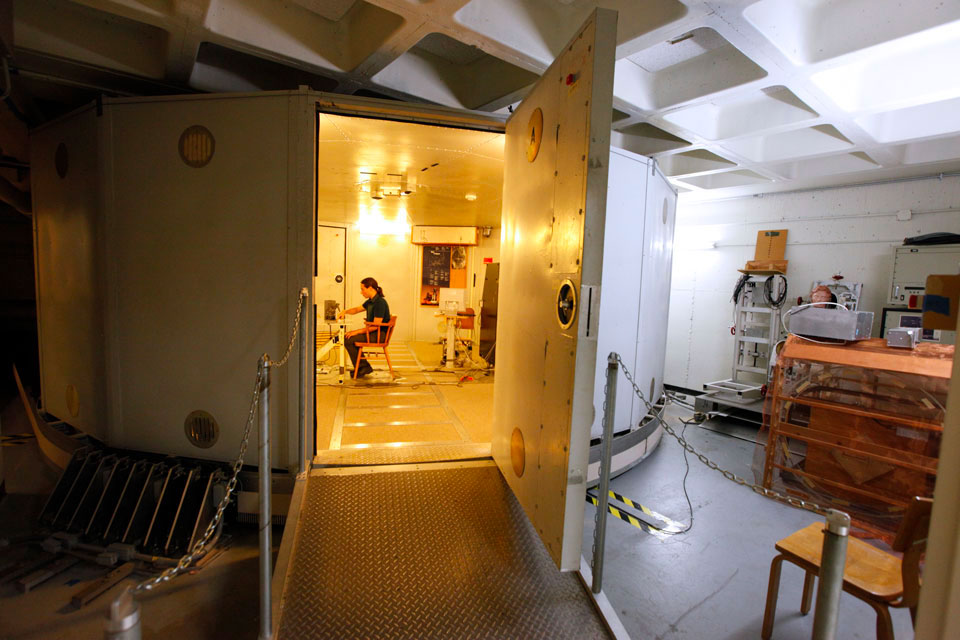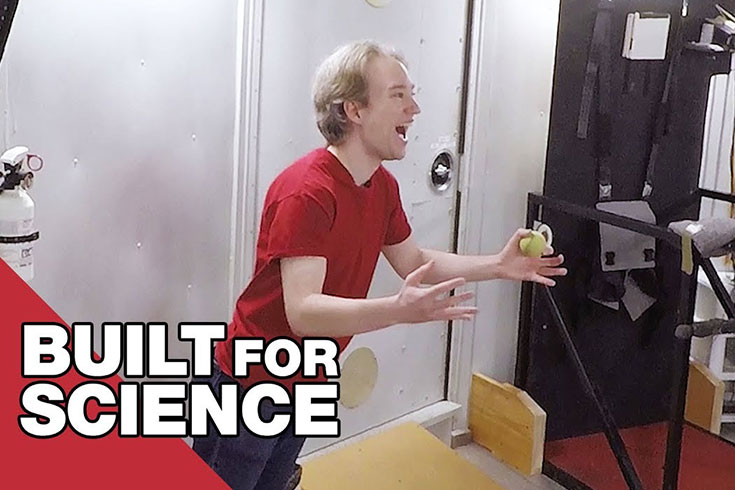Adaptation to Coriolis Forces Due to Passive Rotation

When multi-joint reaching movements are made within a rotating reference frame, additional interaction torques are generated in the form of Coriolis forces.
Coriolis forces are a function of the cross product of the angular rotation of the reference frame, the linear velocity of the arm relative to the reference frame, and the effective mass of the arm. When subjects reach forward during counter-clockwise rotation, there is a rightward Coriolis force on their arm relative to their torso. We have found that subjects seated at the center of a fully enclosed slow rotation room turning at constant velocity (10 rpm) initially make large reaching errors when pointing to targets. Both the paths and the endpoints of their movements are deflected in the direction of the transient Coriolis forces generated by their movements.
The Coriolis forces are absent prior to and after the end of a reaching movement, because they are dependent on the linear velocity of the arm relative to the rotating reference frame. When allowed to make repeated movements, the subjects rapidly adapt to the Coriolis forces generated by their movements and again reach in straight paths accurately to the targets (Lackner & DiZio, 1994).
Post-rotation, the motor adaptation carries over, resulting in aftereffects of opposite sign. Labyrinthine-defective subjects show patterns of movement disruption similar to those of normal subjects, and they also exhibit trajectory adaptation and post-rotation aftereffects (DiZio & Lackner, 2001).
In our rotating room experiments, subjects always feel stationary while reaching. There are no visual cues about rotation because the room is enclosed. The semicircular canals cease signaling rotation after about a minute of rotation at constant velocity.
A subject seated over the rotation axis at 10 rpm is only exposed to sub-threshold centripetal forces. In this situation, in the absence of voluntary movements, maintained counterclockwise rotation is perceptually identical to being stationary. The subjects feel stationary and at first do not compensate for the Coriolis force generated on their arm when they make a reach. This pattern indicates that when subjects do not veridically register their body rotation with respect to external space, they do not initially compensate for the Coriolis forces generated during their reaches. Compensation is an automatic, non-conscious process that requires repeated reaches for complete recalibration to occur.
Reference
- Lackner, J.R., DiZio, P. Rapid adaptation to Coriolis force perturbations of arm trajectory. J. Neurophysiol., 72(1): 299-313, 1994.
Related Video
Tom Scott from Built for Science talks about his experience in the anti-gravity lab.
